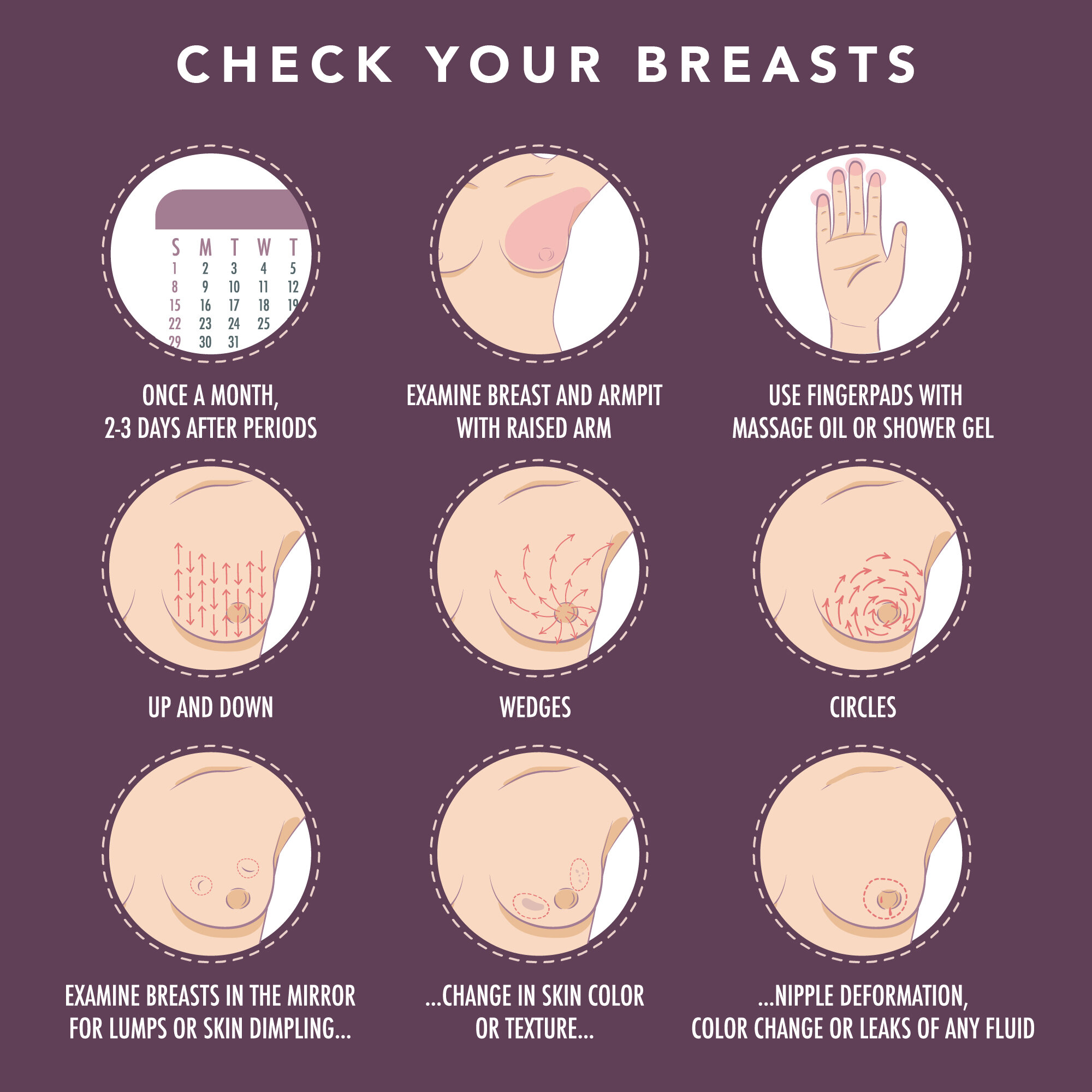Tits up! Detecting breast cancer through skin changes
This blog post is written by dermatologist Dr. Emily Shaughnessy, MD from ThreeMDs, a blog that provides easily digestible, evidence-based, and integrative medical information for women.
In honor of breast cancer awareness month, I want to bring attention to breast cancer screening and some potentially overlooked but important aspects of breast self-examination. The majority of breast cancers are detected through routine screening mammograms, which should start at age 40 (some women make the decision with their doctor to start earlier) and be performed every 1-2 years. With that said, many breast cancers are discovered through self-examination. Although it is uncommon, the first signs of breast cancer in some women are changes to the skin or nipples. So while you are giving yourself a good feel, here are some things to look out for:
A new lump on the skin. We usually think of breast cancer as a lump deep in the breast. Sometimes, however, the lump can be very superficial and appear to be on the skin surface almost like a cyst. If you have a new lump, even if it looks like it’s on the skin, be sure to have it checked out.
Dimpling of the skin. Also called peau d’orange because it resembles the surface of an orange peel. Breast cancer can cause tension and pulling on the skin that results in this dimpling effect.
Nipple retraction (turning inward). If you notice one nipple is being pulled up and in to the breast, this is nipple retraction. It can be a sign of underlying breast cancer. If there is new asymmetry (difference between the two) to the nipples, check with your doctor.
Redness or inflammation of the skin. This can sometimes be mistaken for injury or infection, but it can also be a sign of breast cancer. These changes are associated with a type of breast cancer called inflammatory breast cancer (IBC). IBC tends to occur in younger women (<40 years old) and is often more aggressive. So, if you notice any redness of the skin that is not going away on its own, please see your doctor.
Swelling of the breasts. It is common for breasts to change and become slightly tender and swollen around your period. This is no cause for concern as it happens monthly and is predictable. But if you start noticing swelling when you don’t expect it or swelling of only one breast, you should see your doctor for an exam.
Redness and flaking/peeling of the nipple. Sometimes you can have allergic reactions or eczema that cause changes to the nipple, which is called nipple dermatitis. This can usually be cleared up with some topical medication. However, if it is not clearing up with medicine and is persistent or only one-sided, it could represent a condition called Paget’s disease of the breast. This type of rash on the nipple is highly suggestive of an underlying breast cancer. Don’t ignore a persistent rash on your nipple and be sure to have it checked out!
Discharge from the nipple other than breast milk. Milky discharge from the nipples is normal during breastfeeding. If you are having discharge and you are not breast feeding, however, this can indicate an underlying problem and should be evaluated.
It is important to get familiar with your own breasts so you can determine if there are any changes. Spend some time checking yourself in the mirror. And remember, if you have any concerns, you can always run them by your doctor!


